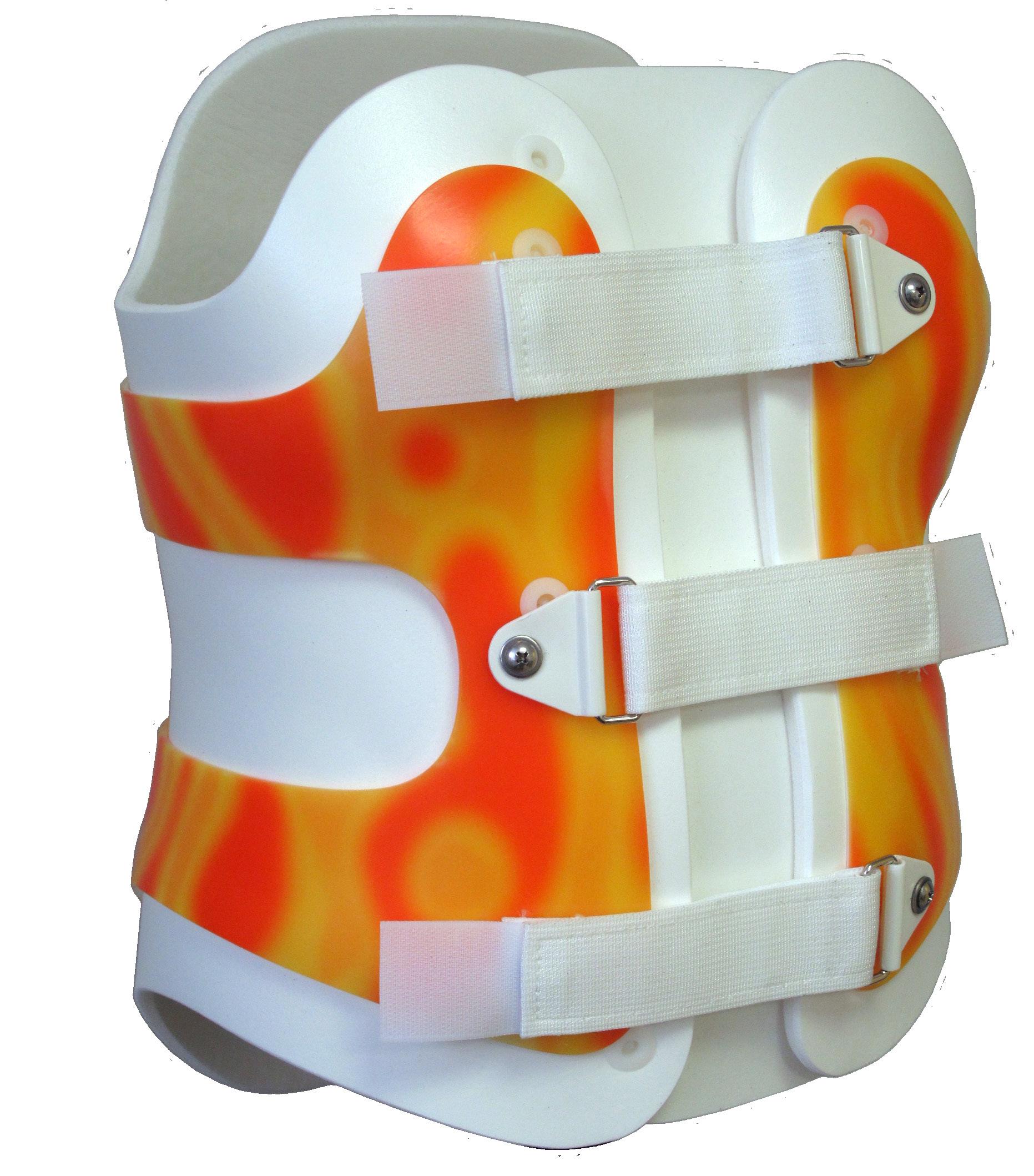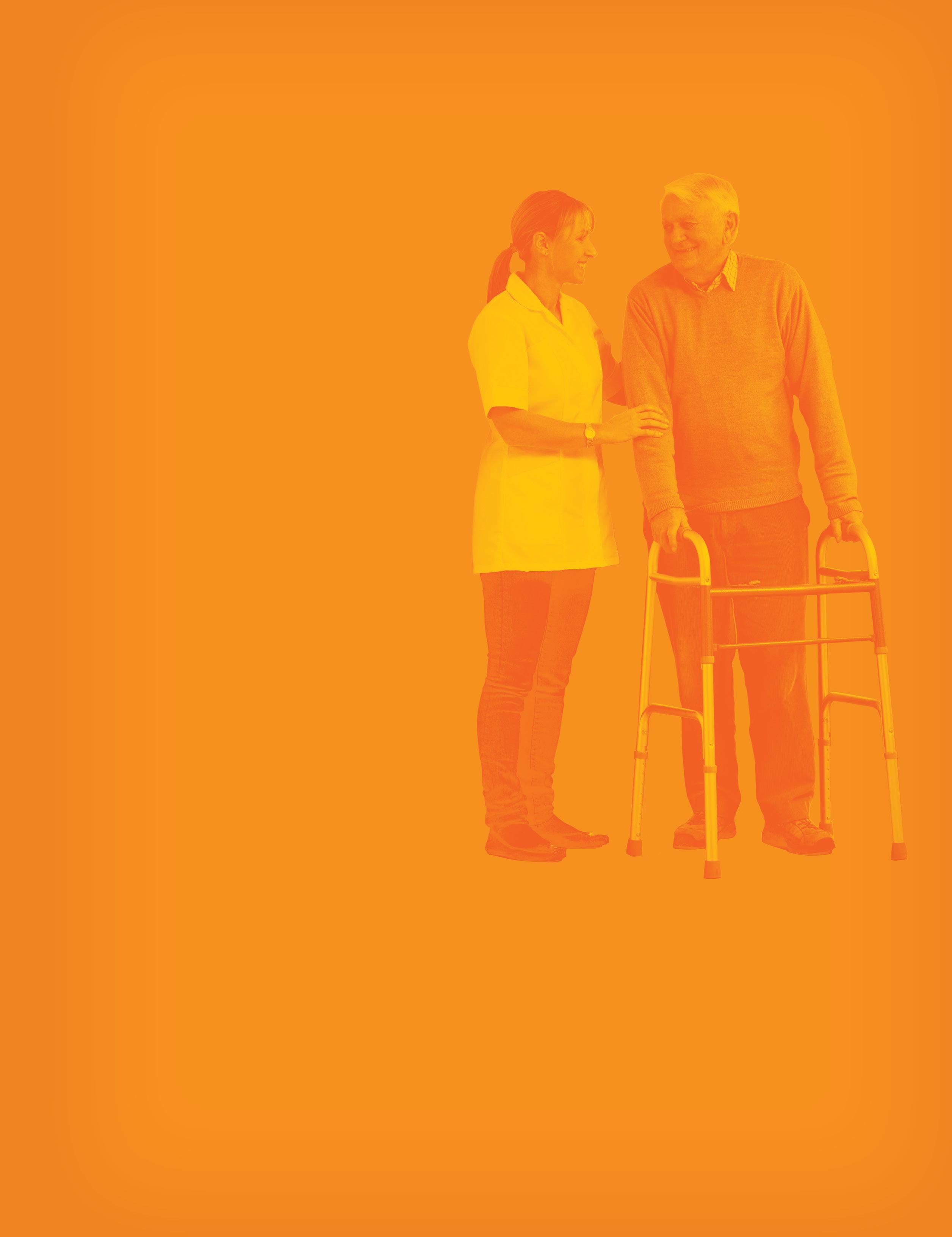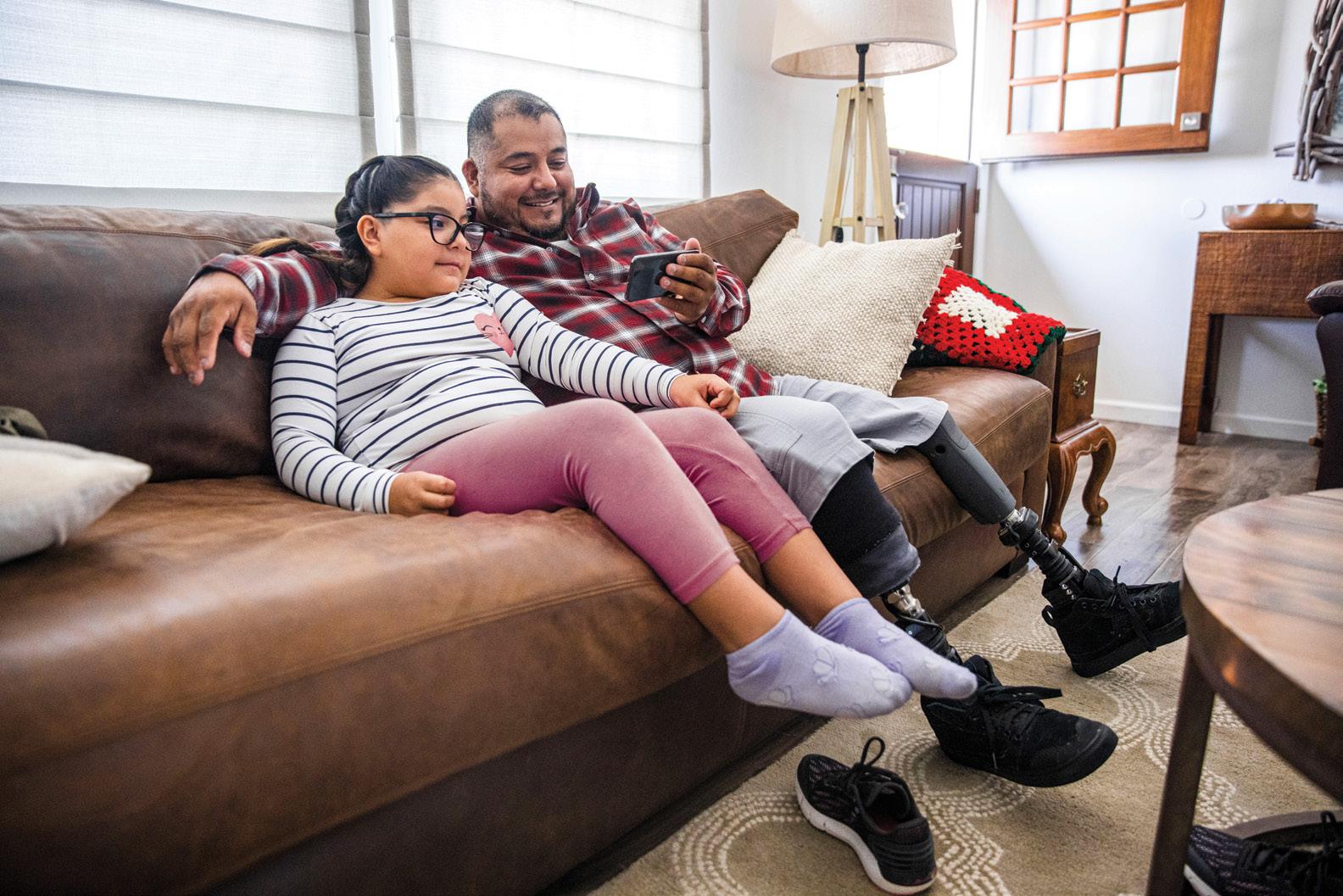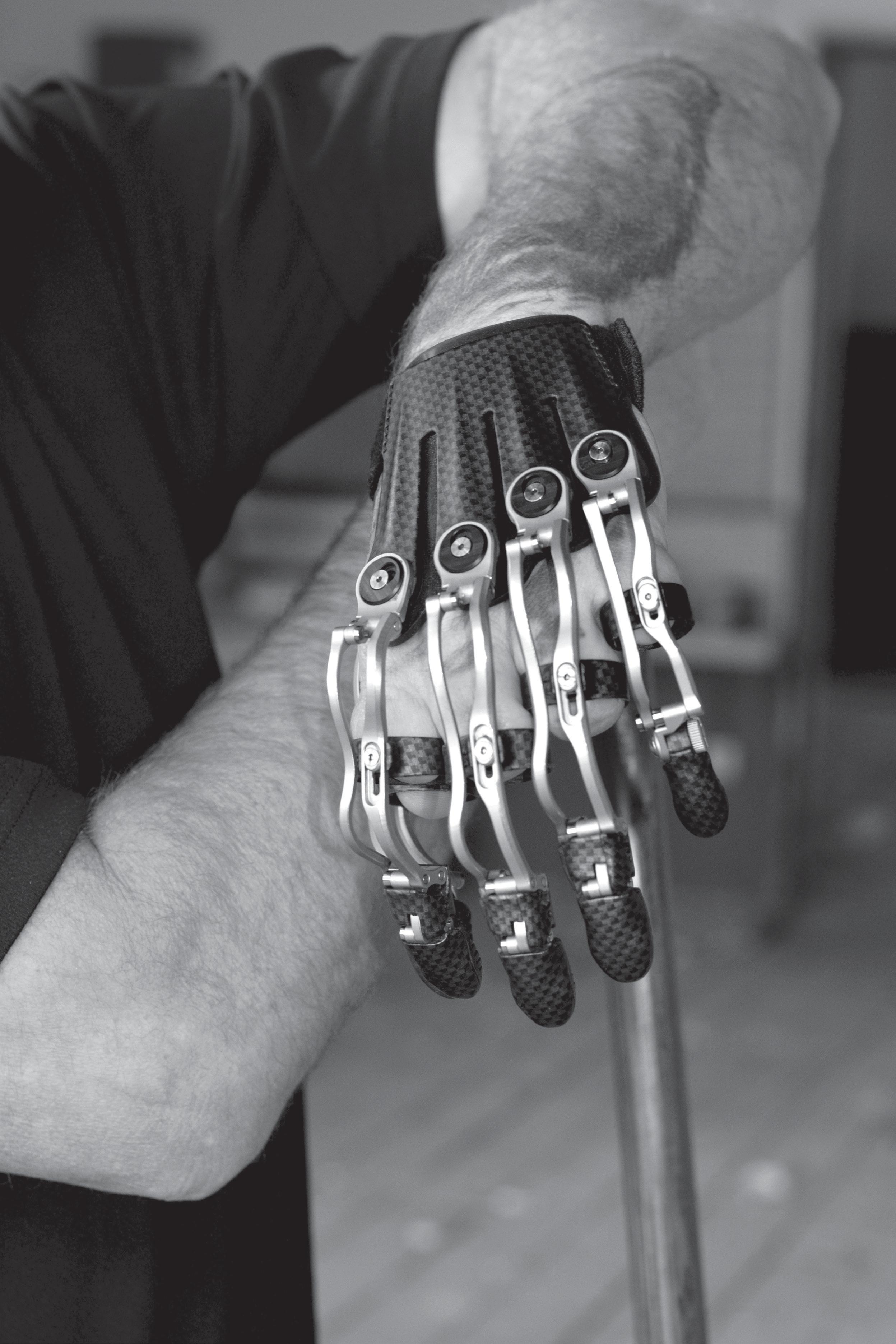
15 minute read
Communicating With Care
TIPS AND STRATEGIES FOR CONNECTING WITH PATIENTS AMID A DIFFICULT HEALTHCARE CLIMATE
By CHRISTINE UMBRELL
NEED TO KNOW
With 2021 on the horizon, it’s time for O&P facilities to reconsider how they are connecting with patients to convey new safety protocols and the continuing importance of O&P intervention.
Facilities should take a strategic approach when pushing out communications via email, text message, and social media, and consider the demographics of the target audiences.
Patients expect to see robust facility websites when they go online to have their questions answered, so O&P companies should update their sites regularly with articles, blog postings, current photos, and even videos.
Marketing experts recommend taking a compassionate tone in communications, given the ongoing pandemic, and focusing on education rather than overly selling a company’s services.
AFTER MANEUVERING TEMPORARY shutdowns and reduced patient loads during the early months of the COVID-19 pandemic, O&P businesses are preparing for a difficult winter as infections rates increase around the country. The promise of vaccines and improved treatments bodes well for the future, but it will be several months before these interventions become widely available. Many patients—particularly older patients and those with comorbidities—will remain concerned about their safety in public venues for years to come. In the meantime, O&P companies are revamping patient-care processes and procedures to create safer facilities designed to limit face-to-face interactions and protect patients, clinicians, and staff. Many of these policy changes are expected to become permanent.
Conveying to patients the continuing importance of O&P intervention and the changes facilities have made to accommodate patient and provider safety is critical. Here, O&P business professionals, patient advocates, and marketing and communications experts share six tips for overhauling communications strategies and connecting with patients as we head into 2021. Tip #1 Share New Safety Protocols With Patients and Prospects Facilities should encourage patients to return for appointments and follow-up care by highlighting new safety measures that offer patients peace of mind via regular, cadenced communications that engage them while explaining these new policies and procedures.
Most healthcare facilities have shifted their practices to promote a safe and healthy environment for their patients, according to George Kuhn, owner and president of Drive Research, a firm that performs qualitative and quantitative market research for several industries, including healthcare. New protocols include scheduling appointments online; conducting health surveys to document that patients are symptom-free; taking temperatures; reducing in-office foot traffic; and requiring masks.
When Patients Forgo Healthcare

While most facilities have seen their patient caseloads rebound in recent months, some patients remain reluctant to leave the safety of their homes to visit healthcare professionals—and the problem could get worse as positivity rates increase. “There’s a staggering number of people who are not seeing their healthcare providers,” says Denise Hoffmann, a nurse and mother of three who lost her leg in college—and an active member of the Amputee Coalition’s Scientific and Medical Advisory (SciMed) Committee. “We have to make sure patients feel safe,” she says.
Shortly after the pandemic began, the World Health Organization published an announcement underscoring the unique challenges individuals with disabilities face during a pandemic, explains Phil Stevens, MEd, CPO, FAAOP, director of the Department of Clinical and Scientific Affairs at Hanger Clinic. “It’s important for patients and clinicians alike to recognize that a global pandemic doesn’t erase chronic disabilities,” he says. “If you have a device that you need to accomplish your activities of daily living and you can’t use it, having those issues addressed becomes essential.”
Kara Couch, CRNP, MS, has seen first-hand the negative impact of failure to keep up with diabetic foot care. Couch, who is chair of the Amputee Coalition SciMed Committee, works at an outpatient wound care clinic and the Limb Preservation Center at the George Washington University Hospital. She saw higher rates of amputation among those patients who delayed care at the wound care clinic during the early months of the pandemic. “We didn’t shut down the clinic—but some people were afraid to come in anyway,” says Couch.
Couch’s anecdotal evidence has been borne out by recent scientific investigations. In Italy, researchers at the University of Campania found that delay of care among diabetes patients with foot ulcers led to higher amputation rates during the pandemic. And a separate research team at Amphia Hospital in the Netherlands found that the lockdown during the pandemic resulted in a significant increase in the number of major amputations. These findings emphasize the need for ongoing preventive and follow-up care at healthcare facilities, including O&P practices.
“Many of these new protocols are shared in their marketing emails, social media, and appointment confirmation calls to ensure everyone is aware of the new rules,” says Kuhn. “Through several studies [across several industries], our market research company found that promoting these safety protocols will increase consideration for using a specific organization among consumers.”


George Kuhn
Transparency is key, agrees Denise Hoffmann, a nurse and mother of three who lost her leg in college—and an active member of the Amputee Coalition’s Scientific and Medical Advisory (SciMed) Committee. She advises facilities to communicate their waiting room policies clearly, as many senior patients or patients with underlying conditions are particularly afraid of these areas—even when they are empty.
In addition, let patients know that clinicians and staff are wearing personal protective equipment (PPE). On its website, Hanger Clinic explains that facilities are equipped with face masks, gloves, and hand sanitizer for staff and visitors, according to Carrie Davis, vice president patient experience, at Hanger Clinic. “We’ve spaced out appointments to minimize the number of people in the clinic at one time and, when possible, have taken patients directly back to patient rooms for check-in,” she says. “Patients also have the option to wait in their cars and receive a call when it’s time to come in to be seen.”
The Flex Foam® Orthosis from Spinal Technology, Inc.

Posterior View

The soft interior foam combined external rigid frame allows your patient the comfort they need
Our patented Flex Foam® orthosis is designed for your patients that cannot tolerate a rigid orthosis. The Flex Foam® offers a softer inner layer for the relief of bony prominences while a combination of dense outer foam and rigid external frame supports the torso. The detachable rigid external frame provides support and can be strategically trimmed to improve anterior, lateral and posterior rotary control as indicated by treatment goals.
Call us at 800 253 7868 to learn more about our patented Flex Foam® orthosis.
TLSO & LSO Designs
Tip #2 Explain How and Why Some Interactions Have Become Virtual Since the pandemic began, the largest shift in consumer behavior “is how they interact with healthcare organizations,” according to Kuhn. “General consumers are shopping online for at-home delivery, or shopping online to pick up their items in-store. The same can be said for healthcare consumers.”
COVID-19 has accelerated the push for virtual healthcare. In fact, two out of thee consumers are more likely to consider telehealth or digital healthcare since COVID-19 began, according to a survey conducted by Drive Research.

Phil Stevens, MEd, CPO, FAAOP
Even in O&P, traditional extended face-to-face appointments aren’t always necessary, says Phil Stevens, MEd, CPO, FAAOP, director of the Department of Clinical and Scientific Affairs at Hanger Clinic. “Remote consultations, curbside appointments, and thoughtful phone calls can sometimes replace face-to-face visits and shorten those on-site visits when they need to occur,” he says. “While patients need to understand the privacy risks that come with telehealth encounters, they can be an effective means of assessing problems and determining next steps,” says Stevens.
Some aspects of in-person appointments have changed, too. For example, more patients are being asked to check in via digital portals and call reception desks when they arrive, to reduce interactions with staff members.
Because patients will have varying reactions to virtual healthcare, facilities should warn patients about all new processes well in advance of appointments—and be prepared to answer questions or guide them through their first virtual experiences. Tip #3 Prioritize Your Facility Website One easy—and important—tactic to communicate with both patients and prospective patients is to design a robust facility website and continuously update it.
“Nearly all healthcare consumers turn to the internet when they have an immediate medical need or question,” explains Kuhn. “They also use it to support their decision-making process when choosing a healthcare facility.” He suggests that facilities consistently update their websites with new resources such as articles and blog postings. “This helps increase your authority and credibility among new patients. Plus, it’s free— other than your time to write and publish the information.”
Many facilities have posted a COVID-19 statement or alert at the top of the home pages, but experts at CareCloud, a healthcare IT solutions firm, suggest taking this approach one step further, by creating a designated COVID-19 page or customized FAQ section. They recommend answering common questions on this webpage, with a goal of alleviating patient concerns regarding safety, appointments, and more.
Along with a list of safety measures in place, photos of staff in PPE on your website can visually demonstrate the protocols being taken, says Kara Couch, CRNP, MS, a nurse at the outpatient wound care clinic and the Limb Preservation Center at the George Washington University Hospital and chair of the Amputee Coalition SciMed Committee.
Kuhn also recommends boosting your website’s prominence through online reputation management and search engine optimization to ensure prospective patients find your facility quickly when they search for O&P patient-care clinics.
Tip #4 Strategically Choose Communications Platforms Keep your patients top-of-mind when considering the most appropriate communications channels to use. “If most of your patients are 60 or older, they are most likely not active on social media. In this example, phone calls or text reminders are your best approach,” Kuhn says. “If your patients are a mix of generations, then I’d recommend email outreach, social media, and text reminders.”
Communications Do’s and Don’ts
Consider these tips when crafting communications messages, suggests George Kuhn, owner and president of Drive Research, a firm that performs qualitative and quantitative market research for several industries, including healthcare:

DON’T use humor.
Although we could all use a good laugh right now, using too much humor can come off as though you’re making light of a sensitive situation, says Kuhn.
DON’T overly self-promote.
Focus on educating your patients and creating marketing that is relevant to their lives, Kuhn advises. “This is not the time to overly sell your services.”
DO keep it consistent.
Try and keep a consistent schedule, with regularly updated content through your website, social media, or email, says Kuhn. “Patients and healthcare consumers alike will start to engage and look forward to your messaging.”
Hanger Clinic has leveraged email messaging throughout the public health emergency. When the pandemic hit, “we got to work immediately connecting with patients to assure them we would safely continue to provide their essential care,” says Davis. “From our enterprise-wide electronic health records system and in collaboration with our Net Promoter Score survey partner, we sent thousands of email notifications to our patients about the precautions we were taking in our clinics and the options we had for safely delivering their care in person or remotely.”
Many facilities also have ramped up their use of text messaging, with patients’ permission, by sending messages that patients will see instantly on their mobile phones. The experts at CareCloud suggest sending text messages regularly on topics that don’t involve PHI, such as home health instructions and device care information.
Finally, social media can be “a great free marketing channel to share messages,” says Kuhn, adding that some healthcare consumers look to a facility’s social media pages to review hours of operation, address, and consumer ratings.
Carrie Davis

At Beacon Prosthetics & Orthotics in Raleigh, North Carolina, social media was instrumental when the facility adopted new processes during the pandemic, says Dana Glover, director of operations. Staff posted new guidelines on Facebook and Instagram. Recently, the facility has pivoted to posts that are less COVIDrelated, opting instead to share photos focusing on patient care, says Glover.
Social media also is a great way to share videos and real-time updates: At Hanger Clinic, “we filmed a video detailing our safety protocols,” says Davis, “and posted it on our website so that patients know what to expect when they enter our clinics. We then shared that through our social media channels.”
Dana Glover
In addition, Hanger facilitates interaction with the community by encouraging comments on its social channels, including on its update posts about COVID-19 precautions, according to Krisita Burkett, vice president of public relations and communications. “One advantage of social media is the ability to receive and answer questions quickly, whether via public comments or direct messages,” she says.
Tip #5 Take a Compassionate Tone COVID-19 has presented its fair share of challenges to healthcare consumers, says Kuhn, so it’s more important than ever to approach patients with compassion. “Many have lost loved ones, their jobs, or a sense of normalcy,” says Kuhn. “Each patient is living with unique circumstances. By creating content with empathy and compassion, consumers are more likely to trust they are in good hands.”
Compassion plays an important role at Beacon P&O, where “we try to create a culture of patient advocacy and patient care first. We treat patients as we would want our families to be treated,” says Glover. Last spring, when safer-at-home recommendations were instituted, there was a “lull” in patient visits, and fewer staff in office to treat the patients who still required care. But staff went out of their way to check in on patients’ general wellbeing, rather than just their orthotic and prosthetic needs. “We reached out by phone, and … postcards worked
UNIQUE DISTAL CONSTRUCTION WITH REDUCED STRETCH TO CONTROL DISTAL DISTRACTION
Only available in High Density Gel



Available in 3mm and 6mm uniform thickness

well for people we couldn’t reach by phone,” says Glover. “We used handwritten, personalized notes to tell them we miss them,” and to ask them to call and check in—even if they were doing fine.
At Hanger, “our clinicians and staff have responded to challenges presented by the pandemic with flexibility and ingenuity,” says Davis. “From a prosthetist in Ohio fitting devices on two pediatric patients in the clinic parking lot, to clinicians in New York City compliantly delivering services curbside, our employees around the country have been committed to making sure our patients have access to the care they need.” Herb Kolodny
The face-to-face interactions that do occur should be extremely meaningful. Remember that some older or comborbid patients are only interacting with a select few individuals. For example, consider Herb Kolodny, an Amputee Coalition patient advocate and above-knee amputee in Connecticut, who shares that he was an extremely active senior prior to the pandemic, cycling on a regular basis in addition to his advocacy duties. Now, due to his age and underlying conditions, he won’t eat in a restaurant, go to a bar, or even visit the grocery store in-person. But he does feel comfortable visiting his clinician, due to the strict safety measures and efforts of the staff.
Facilities also may want to help patients connect with other people with amputations or limb differences via peer support connections, facilitated by the Amputee Coalition or their own resources. After the pandemic hit, “Hanger Clinic began offering compliant AMPOWER peer community meetings through Zoom,” says Davis. “We share information about these group meetings on our social media channels and encourage people to join. ... Providing peer support is aligned with our core value of being patient-focused, and anyone, whether they are a Hanger Clinic patient or not, can opt in to our AMPOWER peer support program and connect with others in a similar situation.” Tip #6 Reduce Missed Appointments By Sending More Reminders A recent study of primary care settings published in “BMC Health Services Research” found an average missed appointment rate of approximately 18 percent. Because many facilities are limiting the number of patient visits each hour to decrease capacity, missed appointments have become even more costly.
Researchers at Intrado, a firm that provides technology-enabled communications solutions for healthcare organizations, found that patients may need multiple reminders if they don’t respond right away: “The optimal cadence is setting a 10-day, three-day, and one-day notification schedule prior to their appointment,” they noted in the report, “Healthcare’s New Normal: Transforming How You Connect With Patients During COVID-19 and Beyond.” They also suggest providing multichannel engagement so patients can select their preferences for phone, text, or emailed reminders. They recommend providing a link to confirm, cancel, or reschedule appointments so that patients can react as soon as they see the reminder and do not forget

to respond.
Of course, include verbiage in any reminder messages asking patients to reschedule if they are feeling sick. Given the ongoing spread of COVID-19, it’s important that patients with any symptoms stay home from healthcare facilities.
Christine Umbrell is a contributing writer to O&P Almanac. Reach her at cumbrell@contentcommunicators.com. Editor’s Note: AOPA member companies now have access to more print communications to share with patients. As part of a new partnership with the Amputee Coalition, AOPA members receive complimentary copies of several Amputee Coalition resources to distribute to patients, including inMotion magazine and several brochures regarding adapting to limb loss, pain management, insurance coverage, and more. Sample pieces of literature and window clings were mailed out to AOPA members in late August, along with a form to order additional resources.

IT’S ALL ABOUT FUNCTION.
According to the AMA Guides to the Evaluation of Permanent Impairment, a loss of 5 partial digits can lead to 54 percent whole person impairment.
CUSTOM-DESIGNED FINGER PROSTHESES
Each device is custom designed to within millimeters of a patient’s unique amputation and hand structure. We offer three custom-designed prostheses. The PIPDriver ™ , MCPDriver ™ , and ThumbDriver ™ .


